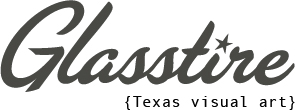Like a hermit crab, Mariana Ruvalcaba Cruz feels at home both on land and in water. Her MFA exhibition, Entre Búsquedas y Encuentros, brings together ceramics and prints that reflect her layered identity, shaped by migration, transformation, and her dual life as a Mexican living in the United States.
Born and raised in Guadalajara until the age of 13, Ruvalcaba later moved to Tijuana. In 2017, she relocated to San Antonio to pursue a Bachelor of Fine Arts in Studio Art at the University of the Incarnate Word (UIW). Five years later, in 2022, she moved again to Corpus Christi to begin her Master of Fine Arts in Studio Art.
Ruvalcaba Cruz has long navigated transitions — both physical and personal. As a competitive swimmer during her youth and undergraduate years, she moved fluidly between lanes and spaces, a rhythm that parallels her eventual move to the United States. Her work explores these movements between places, cultures, and elements, offering a deeply personal meditation on identity, adaptation, and belonging. In my interview with the artist, she reflects, “I am in this vulnerable place, where I am reflecting on my experience of leaving behind different places, my family, and my friends. I spent almost two years without going to Mexico, and I’ve found this need to reconnect to my culture.”

Mariana Ruvalcaba Cruz, “Fragmentos de Mi Ser,” 2024, lithograph, 15 x 21 inches. Courtesy of the artist
Fragmentos de Mi Ser is a lithograph that expresses how Ruvalcaba’s identity is shaped by both the United States and Mexico. Her head takes the form of a hermit crab shell as she connects two floating islands of land. This is a visual metaphor rooted in a childhood memory. During her formative years in Guadalajara, Ruvalcaba often walked the beaches with her family, where they gathered and released hermit crabs in buckets. She vividly recalls seeing a large hermit crab walking without a shell — a moment that lingered with her. Years later, after attending a cousin’s wedding in Guadalajara in fall 2022, Ruvalcaba realized how deeply she identifies with that image. Like the hermit crab, she sheds former versions of herself in order to grow. This connection is why shells appear throughout her work.
An agave and cactus, symbols of resilience, sprout from the artist’s shell head. An anthropomorphic raven, its head replaced by a hand, perches on the cactus while a dragonfly hovers nearby. These elements blend personal and cultural symbolism. The raven is a symbol of change and wisdom. The bird’s presence recalls the idea that change is an essential part of life. Meanwhile, the dragonfly signifies transformation: it begins life in water and eventually takes to the air. Ruvalcaba’s journey reflects this domino effect — her swimming career opened the door to higher education, ultimately leading her to art.
In Resiliente, Ruvalcaba offers another self-portrait, this time reimagining her body as a tree. The tree doesn’t grow in soft soil but instead rises from difficult terrain — perched above three large rocks. This composition is drawn from memory, inspired by a moment on a hike with her mother when they spotted a tree growing improbably from a rocky slope. Reflecting on that image, Ruvalcaba shares, “I saw myself in that tree, when thinking about all of the challenges that I’ve had to face with so many changes in my life. But I’ve been able to adapt to new places.”
The visual metaphor is potent: like the tree, Ruvalcaba’s sense of self is uprooted yet capable of growing — despite, and perhaps because of — the uneven terrain from which she has emerged.

Mariana Ruvalcaba Cruz, “Desde Mi Exilo,” 2024, ceramic, 12.25 x 16 x 8.5 inches. Courtesy of the artist
Desde Mi Exilo is centered on observation and introspection. Fragments of Ruvalcaba’s face hang suspended as if caught mid-thought. This sculptural piece offers a poignant commentary on the language barriers the artist navigates in her daily life. Ruvalcaba explores the dissonance between what she expresses in English and what she truly feels in her heart. The physical separation of the head from the body becomes a metaphor for this emotional and linguistic disconnect.
Ruvalcaba’s choice to use low-fired clay is significant. It references the traditions of West Mexican ceramics. The material reinforces the personal and cultural grounding of the work, connecting her contemporary artistic practice to a longer lineage of handmade expression that extends to pre-Columbian Mexico.
Mariana Ruvalcaba Cruz’s work invites viewers to navigate a landscape where the search for identity and the encounter with transformation are at the forefront. Through her art, she embraces the fluidity and clashes of her Mexican roots and her life in the United States. Entre Búsquedas y Encuentros reveals how Ruvalcaba sheds old versions of herself in pursuit of growth, embracing every transition as an opportunity for connection and reinvention. Her art does not simply depict the journey of a person moving between cultures; it embodies the powerful act of searching for meaning and encountering new possibilities along the way.
Entre Búsquedas y Encuentros is on display at the Weil Gallery at Texas A&M University – Corpus Christi until May 2, 2025.





